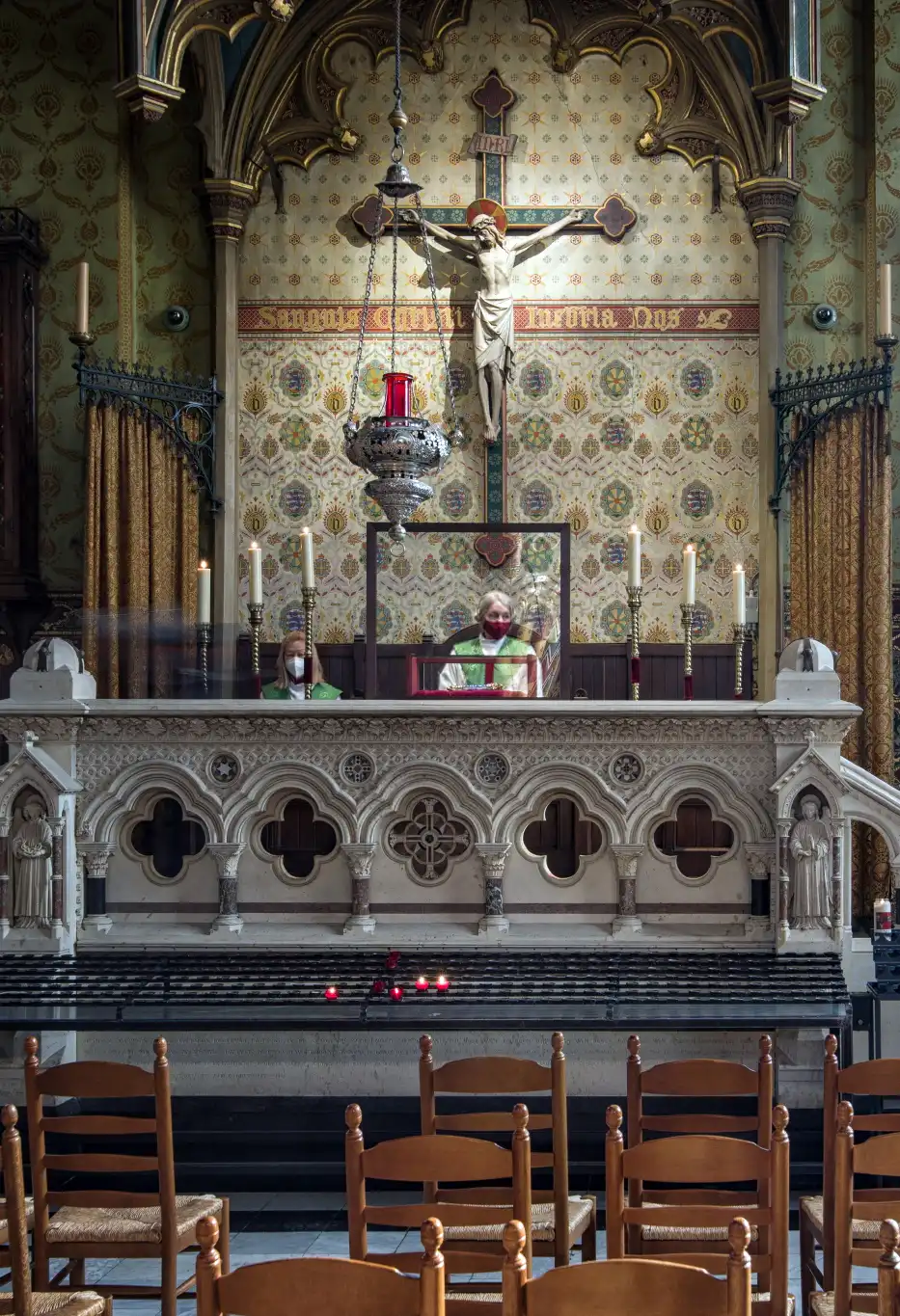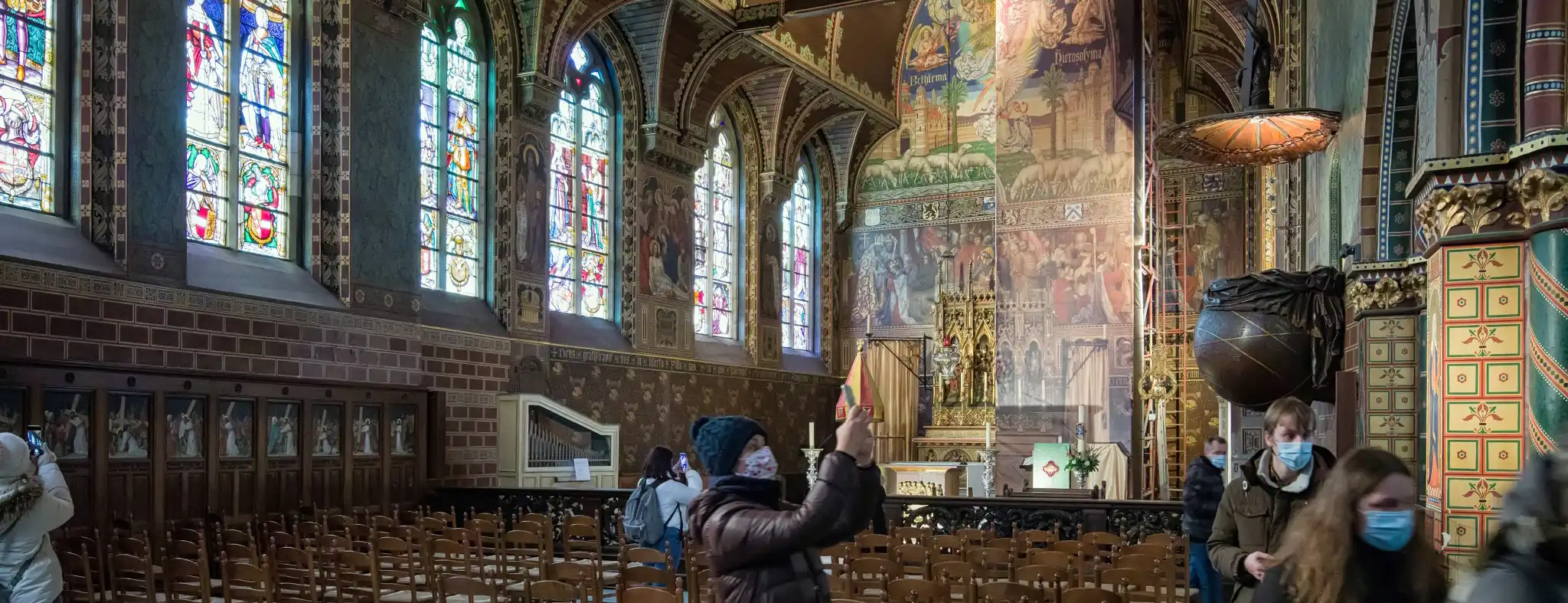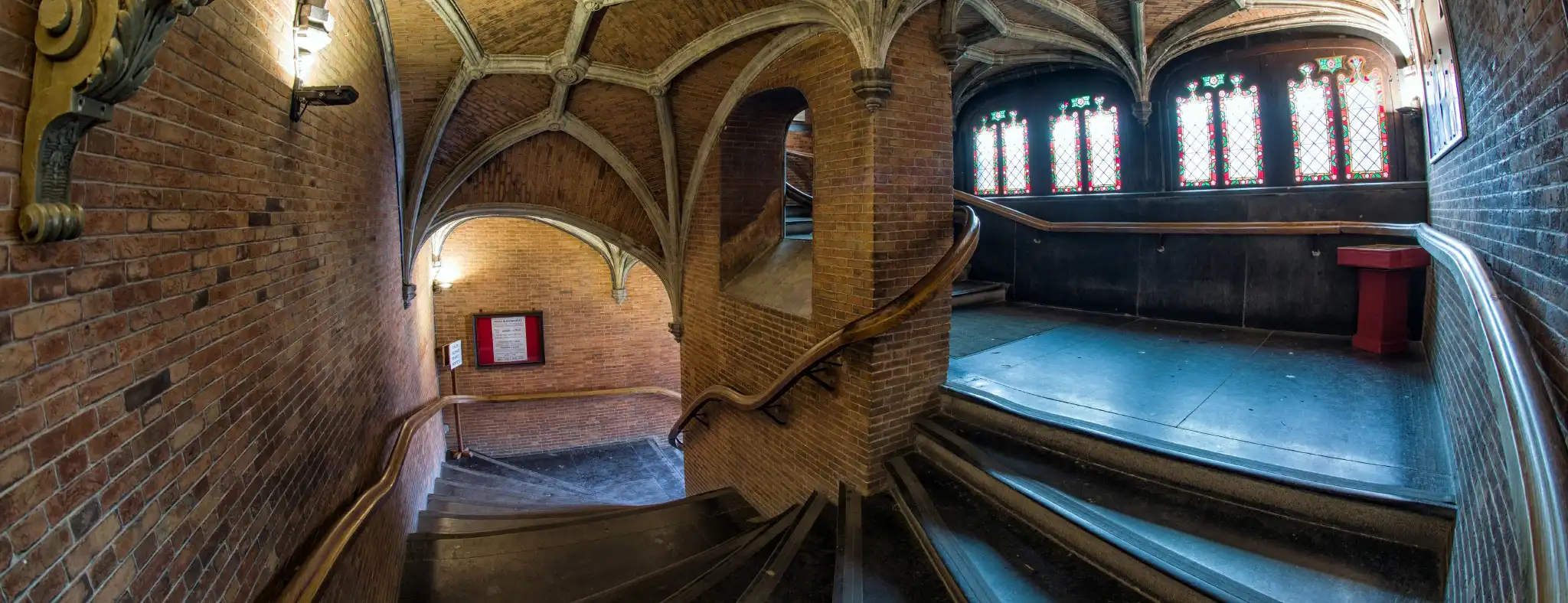
The Lower basilica of Saint-Basilius
The basilica of Saint Basil is the only church in Romanesque style of West-Flanders.
Build in the first half of the 12th century by Thierry of Alsace, Count of Alsace (1128-1168), the basilica is dedicated to Saint Basil the Great, a Greek doctor of the Church (+379) of whom a relic was brought back from Caesarea by Robert II of Jerusalem, Count of Flanders.
The basilica consists of two side naves and a central nave continued by the choir, which in turn is ended by a semi-circular apse.
The seated Madonna and Child or Sedes Sapientiae in the right nave is a wooden polychrome sculpture is dated back to early 14th century. The tympanum above the entrance linking the chapel and the annex is a 12th-century representation of the baptism of Saint Basil. Two remarkable wooden statues representJesus on the Cold Stone and the Pieta. Both sculptures, made around 1900, are highly revered and carried each year in the procession of the Holy Blood.
At the left of the choir, the chapel of Saint Yves was added in 1504. The relics of Saint Basil and of Charles the Good, Count of Flanders and who has been assassinated, are kept here. The black marble retable is presumed to be executed from drafts of Lancelot Blondeel.
The basilica of Saint Basil, the so-called chapel of the Precious Blood, was used by Count Thierry of Alsace and his son Philip of Alsace while residing in the adjacent castle.
The lower basilica supports the upper chapel, originally built in Romanesque style, underwent in the course of centuries many significant transformations. The title of basilica was bestowed to both chapels in 1923.
The monumental staircase DE STEEGHERE that leads to the upper chapel was build in 1533 in Renaissance style ornamented on the outside with statues sculpted according to the drawings of Lancelot Blondeel.
The present building dates from the 19th century since the original was demolished during the French occupation.
The gilded bronze statues represent Archduchess Isabelle, Mary of Burgundy, Thierry and Philip of Alsace and, in the medallions, the Archdukes Albert and Maximilian of Austria, Margaret of York and Sybil of Anjou, wife of Thierry of Alsace and mother of Philip of Alsace.

The Upper basilica
The Gothic upper basilica was build at the end of the 15th century. Only the curved arches giving access to the sidechapel of the Holy Cross are the remains of the original Romanesque chapel. The stained-glass windows in the choir are dated 1845 and represent the sovereigns who reigned over the County of Flanders from Philip the Bold, duke of Burgundy (1342-1404), till Maria-Theresia, empress of Austria (1717-1780).
On both sides of the high altar one can see decorations typical to a basilica : thetintinnabulum, a small processional bell, and the conopeum, a sunscreen in the form of a parasol in yellow and red silk. The pulpit made by Henry Pulinckx in the form of a globe dates from 1728. The reason for this shape can be found in its evangelical purpose : "Go into all the world and preach the gospel"
The large wall-painting behind the altar was realized in 1905. The upper part depicts themystery of the Cross, where Christ shed his blood. In the background can be seen the towns of Bethlehem, where Christ was born, and Jerusalem where he died.
The fresco underneath shows the transport of the relic to Bruges : on the left, Thierry of Alsace receives the relic from the Patriarch and King of Jerusalem; on the right, kneeling besides Countess Sybilla, he hands over the relic to the chaplain.
The altar used today for the Eucharist is decorated with a relief in alabaster dating back to the beginning of the 17th century and depicting the Last Supper. The oak communion rails (17th century) bear four carved medaillons of saints.
The white marble altar in Baroque style in the chapel of the Holy Cross was completed in 1751 by Laurent Delvaux. The two adoring angels were made by Peter Pepers and the silver tabernacle by silversmith Ryelandt. To the right of the altar there is an impressive painting by Jacob van Oost, depicting the descent from the Cross.



